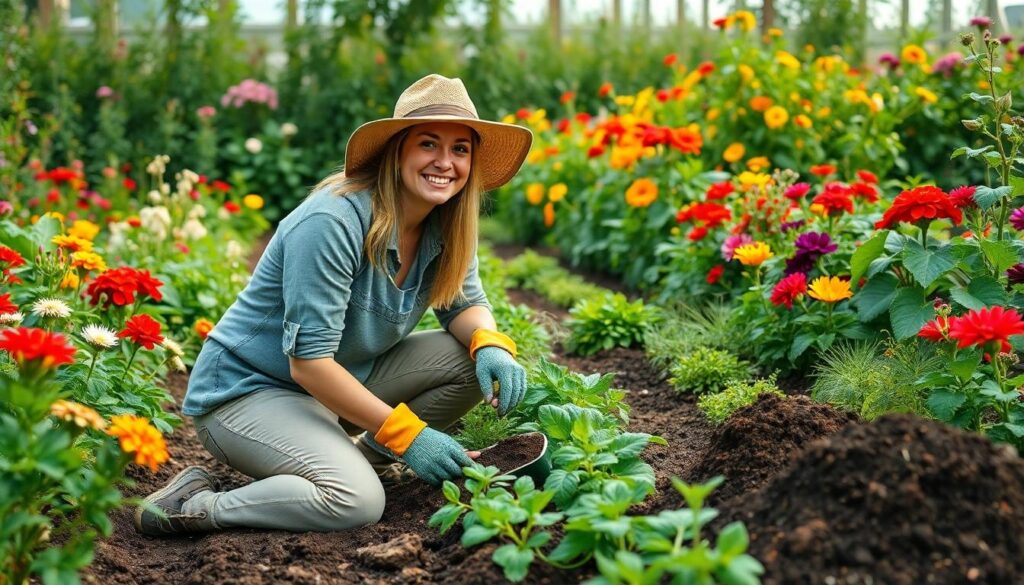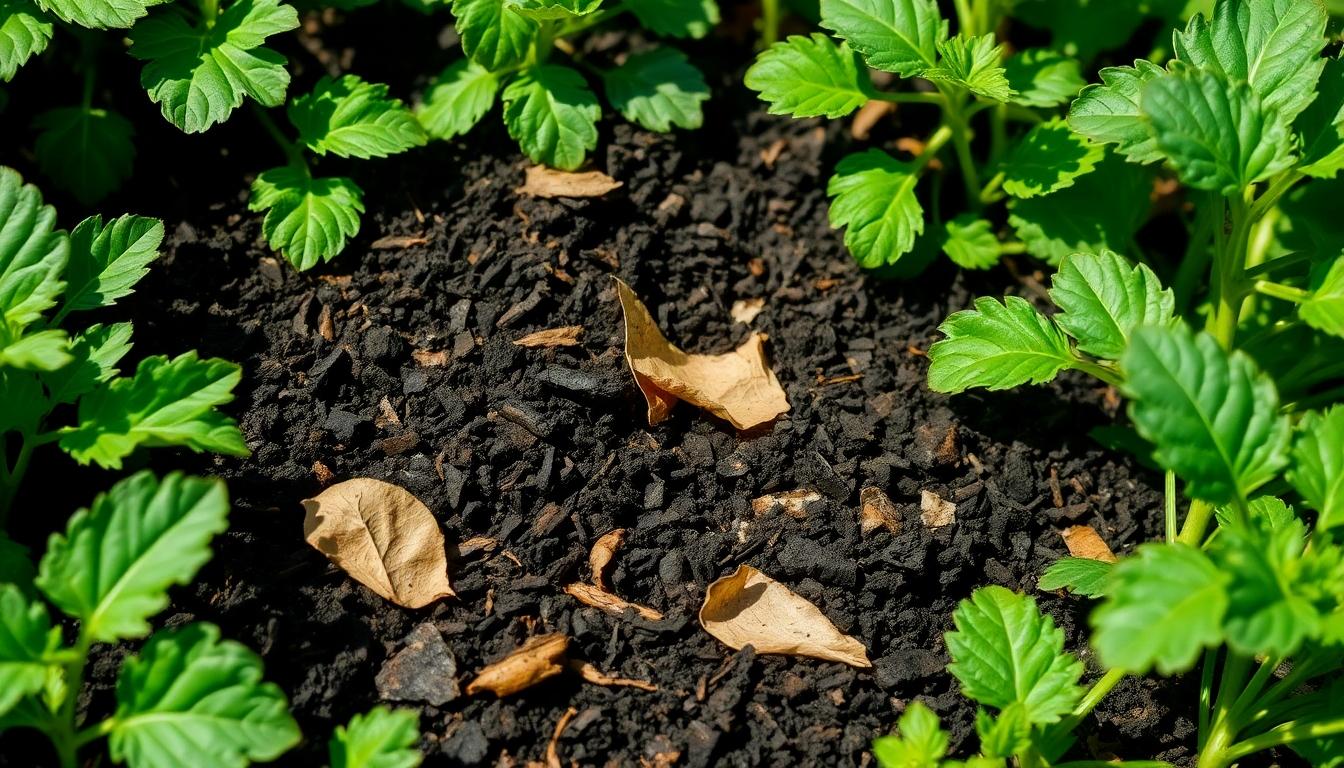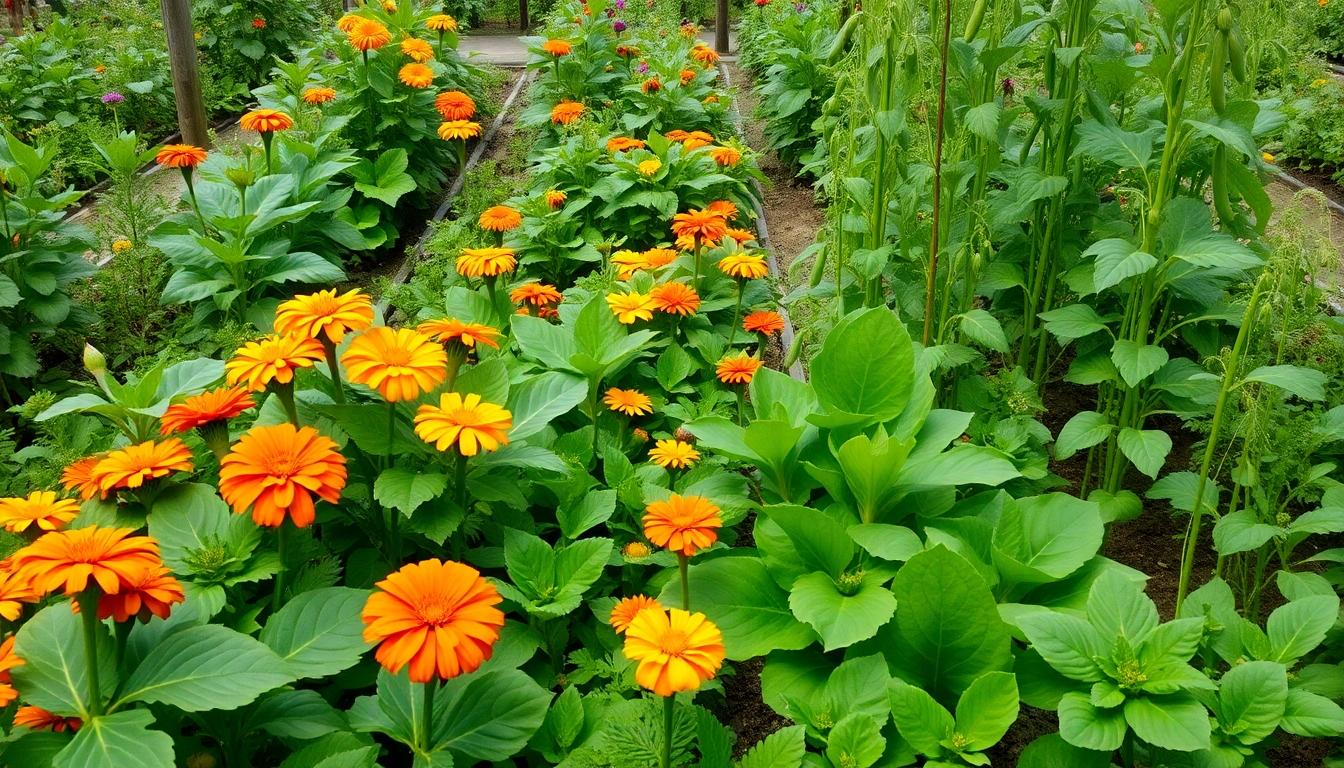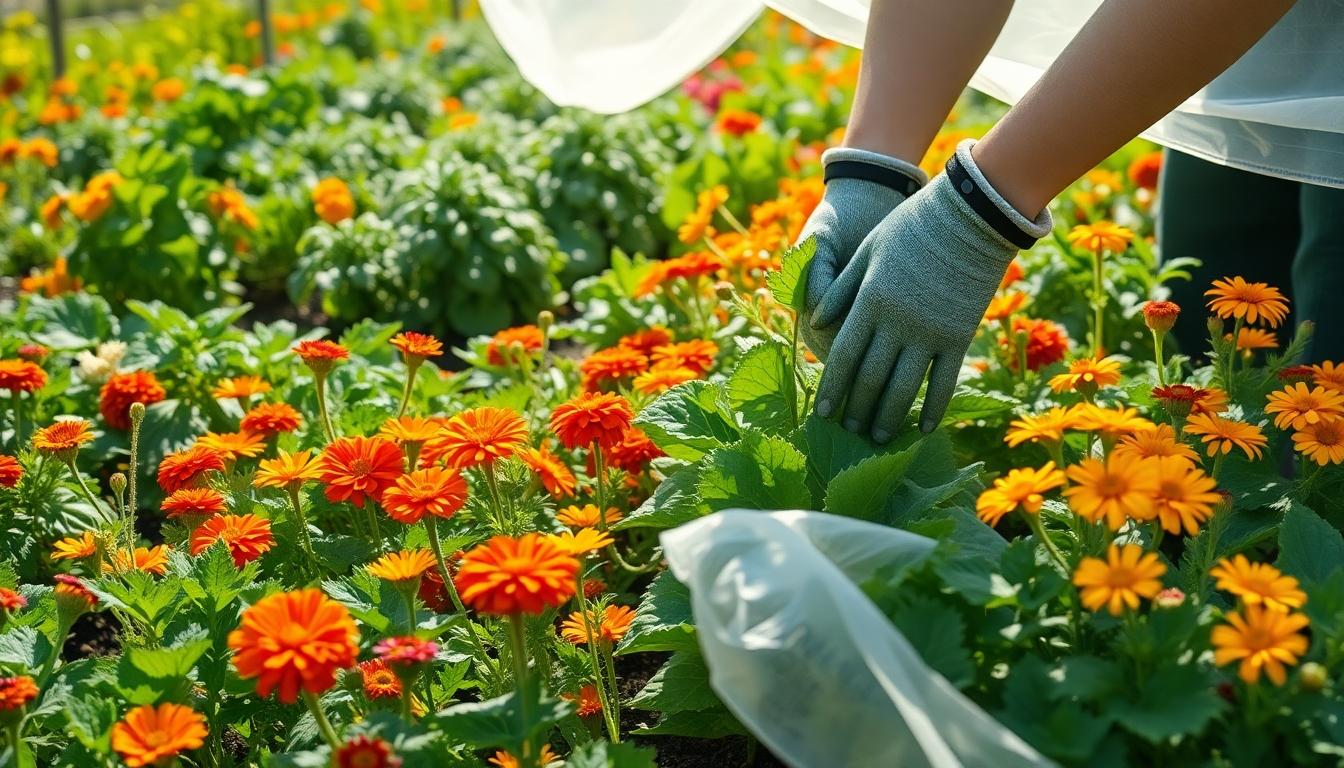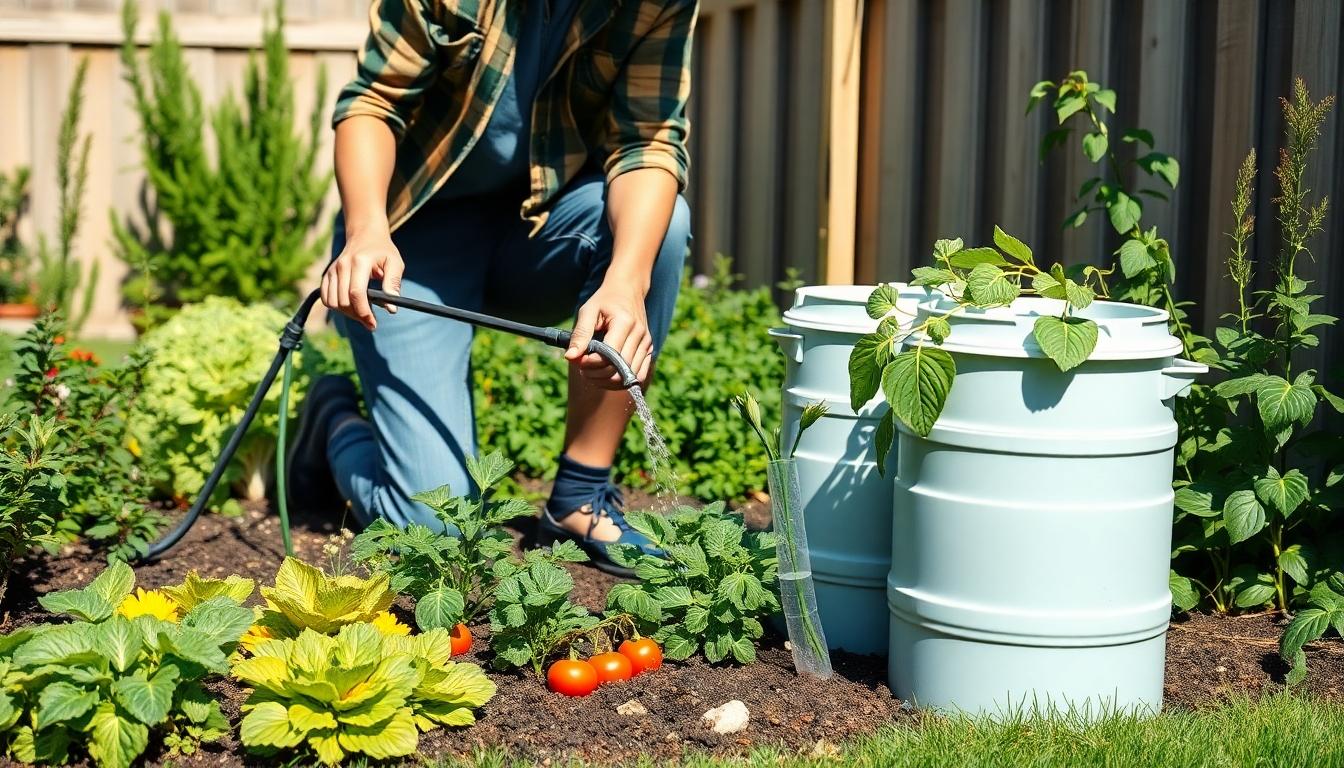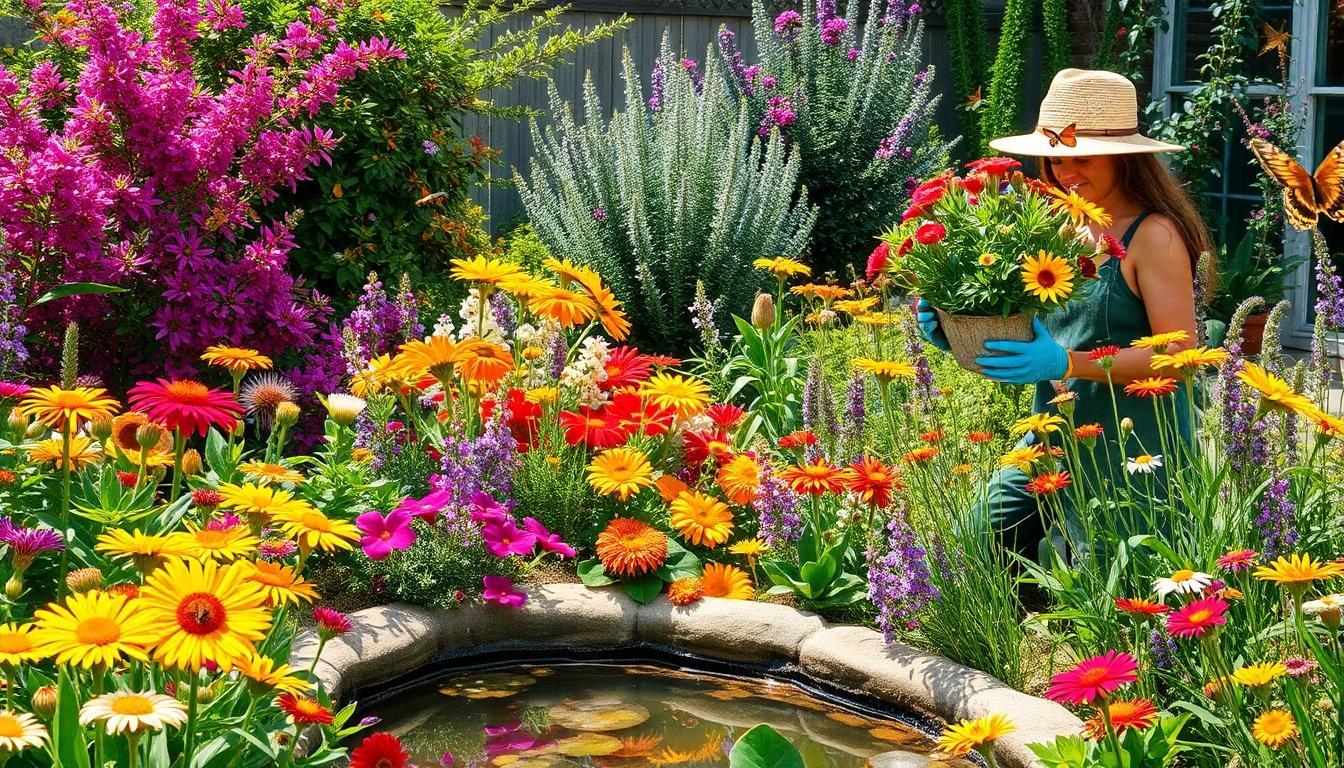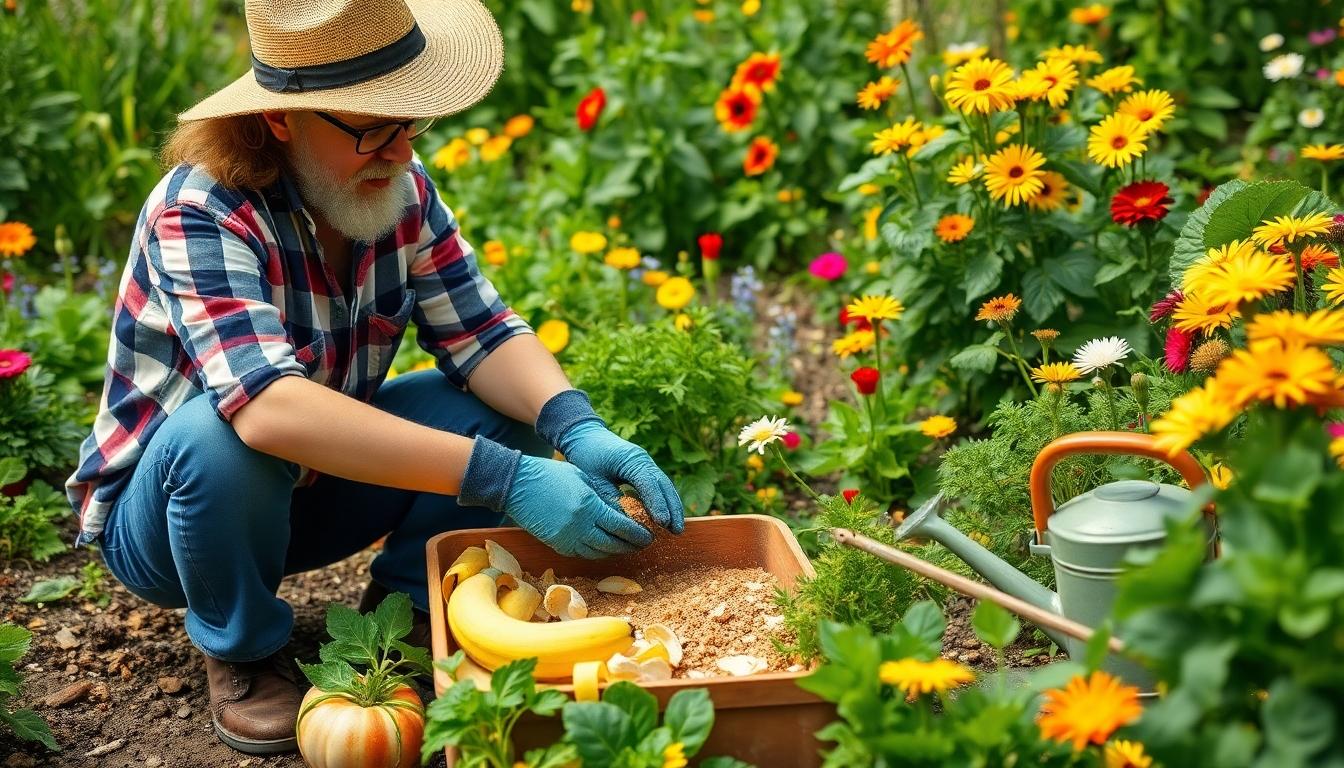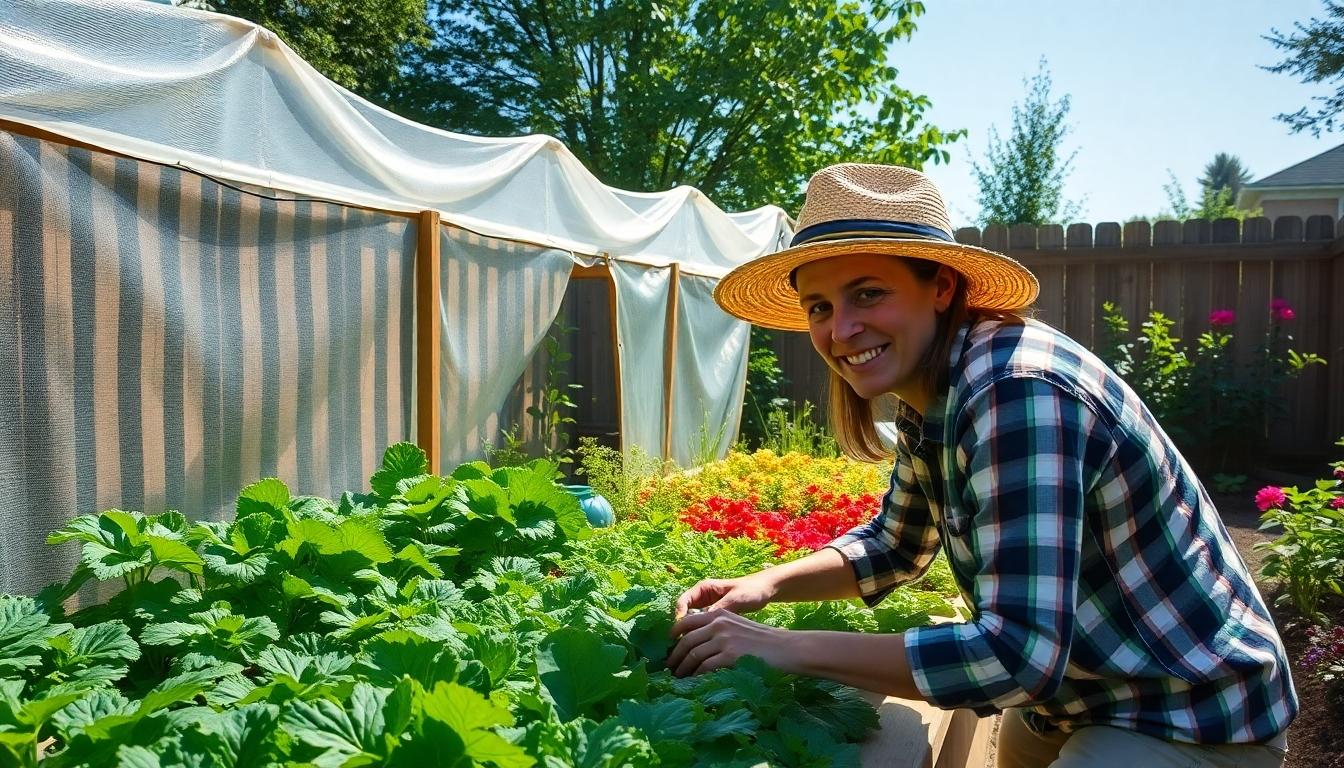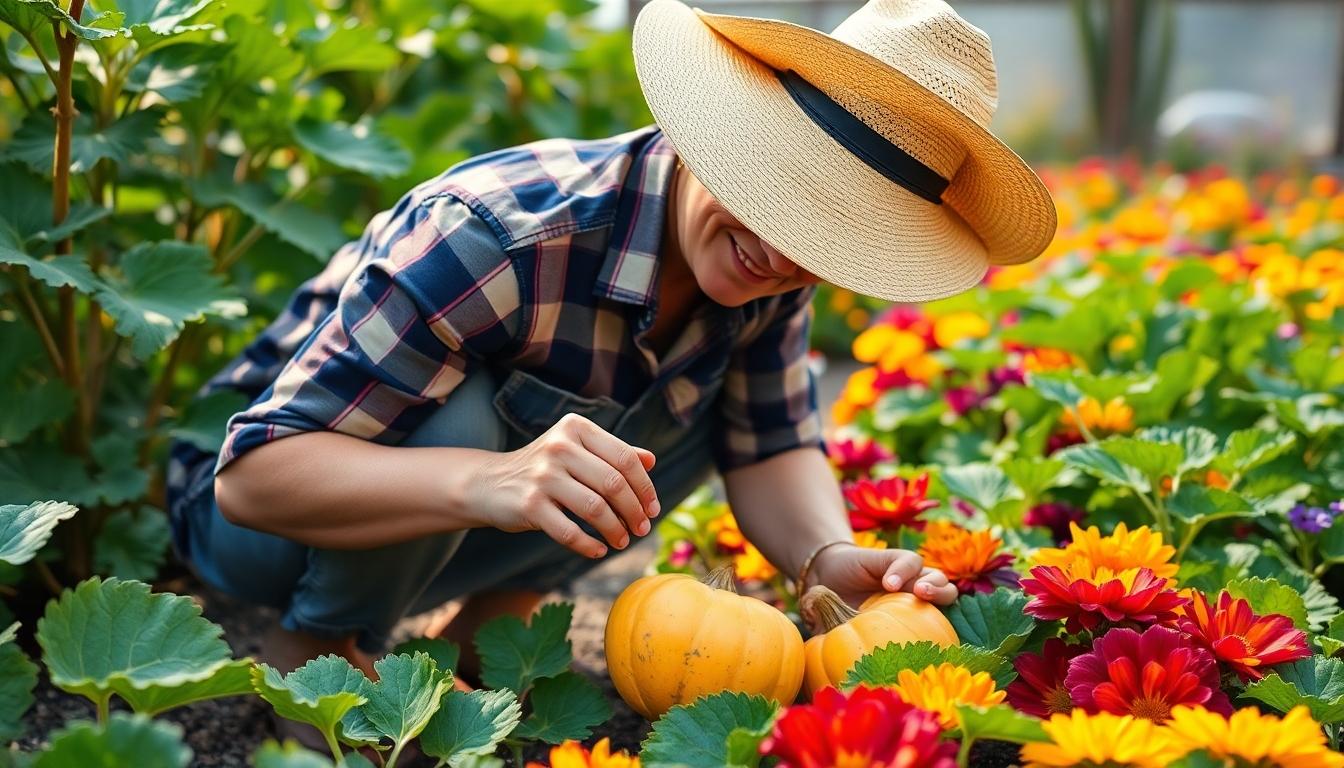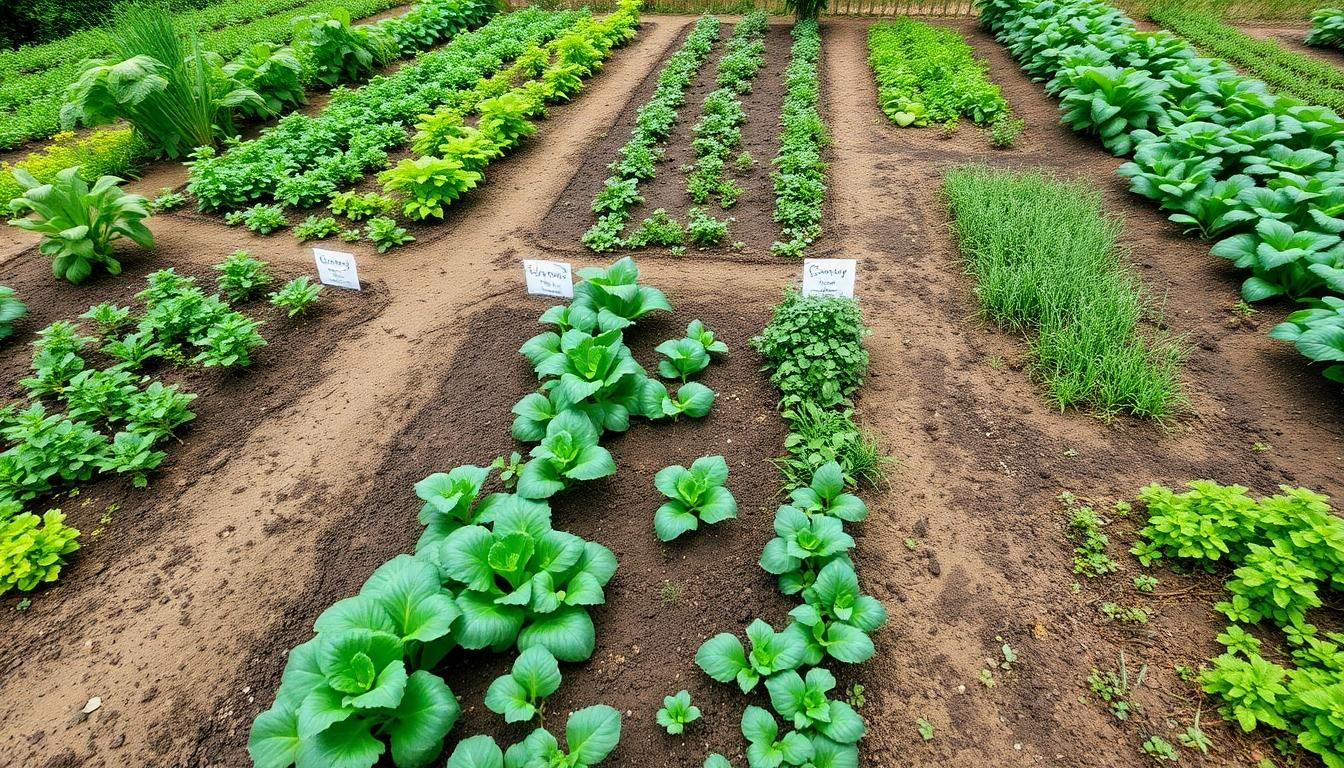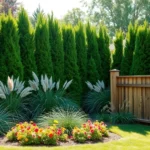Ready to transform your garden into a thriving, chemical-free oasis? We’ve gathered the most effective organic gardening tips that’ll help you grow healthier plants while protecting our environment. With these natural approaches, you’ll not only produce more nutritious fruits and vegetables but also create a sustainable network right in your backyard.
We’ve been practicing organic gardening techniques for years and can confidently say the results speak for themselves. From rich, living soil to pest control methods that don’t harm beneficial insects, organic gardening offers countless benefits. In this guide, we’ll share our tried-and-true strategies that anyone can carry out, regardless of gardening experience or available space.
10 Organic Gardening Tips for a Thriving Chemical-Free Garden
1. Build Healthy Soil with Compost
Healthy soil forms the foundation of successful organic gardening. We recommend adding homemade compost to your garden beds regularly to enhance soil structure and fertility. Composting kitchen scraps, yard waste, and fallen leaves creates nutrient-rich humus that feeds your plants naturally. Your garden soil will retain moisture better and support beneficial microorganisms when enriched with organic matter. Aim to add at least 2-3 inches of compost to your beds annually, preferably in spring before planting.
2. Practice Crop Rotation
Rotating crops prevents pest buildup and disease problems while balancing soil nutrients. We’ve found that changing what you grow in each bed each season significantly reduces recurring pest issues. Plants in the same family often suffer from similar pests and diseases, so avoid planting related crops in the same spot year after year. Keep a garden journal to track what grows where each season for effective rotation. Four-year rotation cycles work best for most home gardens.
3. Choose Companion Planting
Strategic plant partnerships boost growth and naturally deter pests. We love pairing tomatoes with basil to improve flavor and repel insects. Certain plant combinations create symbiotic relationships that benefit both plants. Marigolds planted throughout the garden help repel nematodes and other harmful insects. Try planting aromatic herbs like rosemary and thyme near cabbage family plants to confuse cabbage moths with their strong scent.
4. Make Your Own Natural Pest Controls
Homemade pest deterrents offer effective protection without harmful chemicals. We create a simple spray by blending garlic and hot peppers with water for controlling common garden pests. Neem oil serves as another powerful organic option that disrupts the life cycle of many insects. Spraying plants with a mild soap solution helps control aphids and other soft-bodied insects. Always test homemade sprays on a small portion of the plant first to ensure it doesn’t cause damage.
5. Attract Beneficial Insects
Beneficial insects act as your garden’s natural pest control team. We encourage planting flowers like yarrow, dill, and cosmos to attract ladybugs, lacewings, and parasitic wasps. These helpful creatures prey on garden pests like aphids and caterpillars, maintaining natural balance. Creating insect hotels provides shelter for pollinators and predatory insects. Leave some areas of your garden a bit wild to provide habitat for these garden allies.
6. Use Mulch Generously
Mulching conserves moisture and suppresses weeds while improving soil health. We apply a 2-3 inch layer of organic mulch like straw, leaves, or wood chips around plants. Organic mulches break down gradually, adding nutrients to the soil throughout the growing season. Your garden will need less frequent watering with proper mulch coverage. Apply mulch after the soil has warmed in spring to prevent slugs and maintain appropriate soil temperature.
7. Water Deeply and Less Frequently
Proper watering techniques encourage stronger root systems and healthier plants. We focus on watering deeply once or twice weekly rather than frequent shallow watering. Morning watering reduces fungal disease risk by allowing foliage to dry before evening. Drip irrigation or soaker hoses deliver water directly to the soil, minimizing waste and leaf wetness. Collect rainwater in barrels to provide chemical-free water for your organic garden.
8. Start Plants from Organic Seeds
Organic seeds produce plants adapted to thrive without chemical assistance. We source our seeds from certified organic suppliers to ensure no chemical treatments. Starting from seed gives you access to unique heirloom varieties with exceptional flavor and natural resistance. Your seedlings will develop stronger root systems when started in organic potting mix. Save seeds from your best-performing plants to develop strains specifically adapted to your garden conditions.
9. Maintain Garden Diversity
Biodiversity strengthens your garden’s resilience against pests and diseases. We plant a wide variety of vegetables, herbs, flowers, and beneficial plants together. Mixed plantings confuse pests that seek out exact host plants. Your garden becomes more productive when different plant types occupy various soil layers and niches. Include flowering plants throughout the growing season to support pollinators continuously.
10. Practice No-Till Gardening
Minimal soil disturbance preserves soil structure and beneficial organisms. We avoid deep tilling after establishing beds, instead adding amendments to the surface. No-till methods protect earthworms and mycorrhizal fungi networks that support plant health naturally. Your soil builds carbon content over time with this approach, becoming increasingly fertile. Add new planting holes with minimal disruption to surrounding soil when rotating crops or replacing plants.
Starting With Healthy Soil: The Foundation of Organic Gardening
Healthy soil serves as the cornerstone of successful organic gardening, functioning as a living network that directly supports plant growth and vitality. Native soils typically require amendments to enhance fertility and create an optimal environment for your plants to thrive.
Understanding Soil Composition and pH Levels
The ideal soil composition combines sand, peat moss, and organic matter in balanced proportions to provide the perfect growing medium for your garden plants. Most vegetables flourish in soil with a pH level between 6.0 and a neutral 7.0, making this range optimal for diverse garden production. Testing your soil’s pH helps determine necessary adjustments before planting to ensure your garden receives the proper foundation. Different plants require exact pH environments, so understanding these requirements allows us to create customized growing conditions. Amending your soil with materials like perlite, sand, vermiculite, and pumice significantly improves drainage, preventing water-logged conditions that can damage root systems.
How to Create Nutrient-Rich Compost at Home
Creating your own compost provides a free, sustainable way to enrich your garden soil with essential nutrients. Follow these steps to produce high-quality compost:
- Collect Organic Materials – Gather kitchen scraps (excluding meat and dairy), fallen leaves, and grass clippings to form the foundation of your compost pile.
- Mix Green and Brown Materials – Balance nitrogen-rich “green” materials (fresh grass clippings, vegetable scraps) with carbon-rich “brown” materials (dry leaves, shredded newspaper) at approximately a 1:3 ratio.
- Maintain Moisture and Turn the Pile – Keep your compost with the moisture level of a wrung-out sponge and turn it weekly to accelerate decomposition and prevent odors.
- Cover the Pile – Place a tarp over your compost when not adding materials to retain crucial nutrients and prevent unwanted weed seeds from settling in.
- Use When Mature – Your compost is ready for garden application when it appears dark and crumbly with an earthy smell, typically after 3-6 months of decomposition.
Choosing the Right Plants for Your Organic Garden
Plant selection is one of the most crucial decisions you’ll make in your organic garden. The right choices can significantly improve your garden’s resilience and productivity while reducing the need for interventions.
Selecting Heirloom and Open-Pollinated Varieties
Heirloom and open-pollinated varieties should be at the top of your organic gardening shopping list. These plants offer untreated seeds free from chemical residues, making them ideal for truly organic growing methods. We recommend seeking out organic, untreated seeds and seedlings whenever possible to maintain the integrity of your chemical-free garden. Heirloom varieties contribute significantly to preserving genetic diversity, a fundamental aspect of sustainable gardening practices. Their adaptability to local conditions improves over successive growing seasons, creating plants that thrive specifically in your unique microclimate. Many gardeners find that these traditional varieties often deliver superior flavor compared to their hybridized counterparts, though yields might sometimes be smaller. The seeds you collect from these plants will produce offspring with the same characteristics as the parent plants, allowing you to become more self-sufficient in your gardening journey.
Companion Planting Strategies for Pest Control
Companion planting serves as a natural and effective approach to pest management in organic gardens. Strategic plant pairings can dramatically reduce pest problems without resorting to synthetic chemicals. Basil planted alongside tomatoes helps repel thrips, which can damage tomato fruits and spread diseases. Marigolds deserve a place throughout your vegetable garden as they deter nematodes, microscopic worms that attack plant roots. Beyond pest management, companion planting maximizes garden space efficiency by combining plants with different growth habits. Tall, vertical crops like beans work beautifully with low-growing plants such as lettuce, allowing you to harvest more food from the same square footage. Careful plant combinations can also improve pollination and create beneficial microclimates that enhance overall garden health. When designing your garden layout, consider these natural partnerships to foster a balanced network that requires fewer interventions.
Natural Pest Management Without Harmful Chemicals
Managing pests organically is essential for maintaining a healthy garden network without introducing harmful chemicals. Here are effective strategies we’ve tested and implemented in our organic gardens.
Crop Rotation
Crop rotation serves as a fundamental technique to break pest life cycles naturally. By changing what you plant in exact areas each season, you’ll disrupt pest habitats and prevent soil-borne diseases from establishing. Plants from the same family often suffer from similar pest problems, so rotating different plant families through your garden plots creates an inhospitable environment for persistent pests. This practice also helps balance soil nutrients as different plants have varying nutritional needs.
Companion Planting
Companion planting utilizes natural plant relationships to deter pests effectively. Marigolds release a substance from their roots that repels nematodes and other soil pests when planted alongside vegetables. Nasturtiums act as trap crops for aphids, drawing them away from your valuable produce. Herbs like basil planted near tomatoes improve their flavor while repelling tomato hornworms. These strategic plant pairings create a more resilient garden network that requires fewer interventions.
Physical Barriers
Physical barriers provide a simple yet effective defense against many common garden pests. Row covers made of lightweight fabric allow sunlight and water to reach plants while keeping insects away. Copper tape creates boundaries that slugs and snails refuse to cross due to the mild electric charge they experience upon contact. Diatomaceous earth, when sprinkled around plants, acts as a microscopic barrier that physically damages the exoskeletons of crawling insects. These non-toxic answers create protection without introducing any chemicals to your garden network.
Beneficial Insects That Protect Your Garden
Ladybugs function as natural pest controllers, consuming up to 50 aphids daily along with whiteflies and other soft-bodied pests. These spotted beetles can be attracted to your garden by planting dill, fennel, and yarrow. Lacewings patrol gardens hunting for aphids, mealybugs, and caterpillars, with each lacewing larva devouring up to 200 pests weekly. Parasitic wasps target exact pests by laying eggs inside or on host insects, providing targeted pest management without harming beneficial insects. Their presence creates a natural balance that reduces the need for manual pest control interventions.
Homemade Organic Pest Deterrents That Actually Work
Soap spray creates an effective solution against soft-bodied insects like aphids and mealybugs. Mix one tablespoon of mild dish soap with one quart of water and spray directly on affected plants, causing the waxy coating of insects to break down. Garlic spray harnesses natural sulfur compounds that repel many garden pests. Blend several garlic cloves with water, strain the mixture, and spray it on plants weekly to create a protective barrier. Hot pepper spray utilizes capsaicin to deter feeding insects and mammals. Combining hot peppers with water and a drop of soap creates a potent spray that burns insect mouthparts without harming plants. These homemade answers provide targeted pest management without introducing synthetic chemicals to your garden.
Water Conservation Techniques for Sustainable Gardens
Conserving water in your organic garden not only reduces your environmental footprint but also creates healthier plants with stronger root systems. Implementing sustainable water practices helps maintain garden productivity even during dry periods.
Efficient Irrigation Methods for Organic Gardens
Drip irrigation systems stand out as the most efficient watering method for organic gardens, delivering water directly to plant bases where it’s needed most. These systems minimize water waste by targeting the root zone, significantly reducing evaporation and preventing fungal diseases that thrive in wet foliage. Soaker hoses offer another excellent option, providing slow, deep watering that encourages optimal root absorption and development. Timing matters tremendously when it comes to irrigation efficiency—we recommend adjusting your watering schedules based on exact plant growth stages and current weather conditions. Morning watering proves most effective, giving plants adequate moisture to withstand daytime heat while allowing foliage to dry before cooler evening temperatures arrive. Adding organic matter to your soil dramatically improves its structure and water-holding capacity, creating a natural reservoir that reduces irrigation frequency and promotes healthier root systems.
Collecting Rainwater for Garden Use
Rain barrels represent one of the simplest yet most effective water conservation techniques available to organic gardeners today. Installing these collection systems allows you to capture valuable runoff from rooftops, providing a free, untreated water source for your plants. Stored rainwater becomes particularly valuable during dry spells, reducing dependency on municipal water supplies and lowering your utility bills. Plants actually prefer rainwater to tap water because it lacks chlorine and other chemicals that can inhibit beneficial soil microorganisms. Strategic placement of multiple rain barrels throughout your property maximizes collection potential, especially during heavy rainfall events. Drought-tolerant plants complement rainwater harvesting systems perfectly, requiring less supplemental irrigation between natural precipitation events. Native species thrive particularly well in this approach, as they’ve naturally adapted to local rainfall patterns and soil conditions. Connecting rain barrels to drip irrigation systems creates the ultimate water-efficient garden setup, combining collection and targeted delivery methods.
Creating Biodiversity to Strengthen Your Garden Ecosystem
Biodiversity serves as the backbone of a resilient organic garden. By cultivating a diverse network, you’ll create a self-regulating environment that naturally resists pests and diseases while promoting overall garden health.
Organic Gardening Practices
Implementing organic gardening techniques is essential for building biodiversity. Composting transforms kitchen scraps and yard waste into nutrient-rich soil amendments that feed beneficial microorganisms. Mulching conserves moisture, suppresses weeds, and provides habitat for ground-dwelling insects. Companion planting strategically positions plants that benefit each other, creating natural pest management systems. Avoiding chemical pesticides and herbicides preserves the delicate balance of beneficial insects and soil microbes that form the foundation of a healthy garden network.
Water features like small ponds or birdbaths attract a variety of wildlife that contribute to your garden’s biodiversity. Shelter elements such as brush piles, rock gardens, or rotting logs create microhabitats for beneficial insects, amphibians, and small mammals that help control pest populations naturally. Diverse plantings with varying heights, bloom times, and structures provide year-round resources for wildlife while creating a more aesthetically pleasing garden design.
Attracting Pollinators to Boost Crop Yields
Pollinator gardens significantly increase your vegetable and fruit yields while supporting declining pollinator populations. Butterflyweed (Asclepias tuberosa), Purple Coneflower (Echinacea purpurea), and Sunflowers (Helianthus annuus) serve as pollinator magnets, drawing in bees, butterflies, and beneficial insects that transfer pollen between your crops. Grouping these flowering plants near vegetable gardens creates convenient “pollinator highways” that improve fruit set and quality.
Fragrant native flowers appeal to a wide range of pollinator species with different preferences and feeding habits. Plants with tubular flowers attract hummingbirds, while flat-topped blossoms provide landing pads for butterflies and beetles. Incorporating varieties with different bloom times ensures continuous nectar sources from early spring through late fall, maintaining pollinator presence throughout the growing season.
Incorporating Native Plants for Local Wildlife
Native plant species offer unmatched ecological benefits for your organic garden network. These plants have evolved alongside local wildlife, making them perfectly adapted to regional soil conditions, rainfall patterns, and climate extremes. Native species require less water, fertilizer, and maintenance than exotic alternatives while providing ideal habitat for birds, beneficial insects, and other wildlife that contribute to your garden’s natural pest control system.
Diverse plantings create layered habitats that support a wider range of wildlife species. Tall native trees provide nesting sites for birds and shade for understory plants. Native shrubs offer food and shelter for birds and small mammals. Herbaceous perennials and groundcovers support pollinators and beneficial insects. This vertical diversity maximizes biodiversity in limited space while creating a more resilient network that can withstand environmental stresses.
Resource conservation practices further enhance your garden’s biodiversity. Water-wise gardening techniques like rainwater harvesting and mulching preserve moisture for plants during dry periods. Maintaining leaf litter and plant debris provides overwintering habitat for beneficial insects. Allowing some areas to remain “wild” creates undisturbed habitat for ground-nesting bees and other beneficial creatures that might be displaced by intensive gardening practices.
Making and Using Organic Fertilizers at Home
Homemade organic fertilizers offer a sustainable way to nourish your garden while reducing waste. Creating your own compost is one of the most effective strategies, using kitchen scraps, yard waste, and manure to produce nutrient-rich soil amendments for your plants.
Kitchen Waste Answers for Garden Nutrients
Kitchen waste provides an excellent source of nutrients for your garden without requiring traditional composting. Non-compostable kitchen items like crushed eggshells deliver calcium directly to your soil when buried near plants or steeped in water to create a calcium-rich liquid fertilizer. Banana peels work wonders as a potassium boost when buried near plants, releasing nutrients slowly as they decompose. Remember to use only untreated, organic materials in your garden to maintain purity. Avoid including meat, dairy products, or oily foods that might attract pests to your garden beds. Direct application of kitchen waste creates an efficient cycle of waste reduction while simultaneously feeding your plants essential nutrients.
Brewing Compost Tea for Plant Health
Compost tea serves as a powerful liquid fertilizer that enriches soil microbes and delivers concentrated nutrients directly to your plants. Fill a cloth bag with well-decomposed compost and submerge it in water using a 1:5 ratio of compost to water. Aerate the mixture for 24-48 hours with an aquarium pump to encourage beneficial microbe growth. Apply this nutrient-rich solution directly to soil or use as a foliar spray every 2-3 weeks during the growing season. Using fully decomposed compost prevents the introduction of pathogens into your garden network. Compost tea provides both immediate nutrient availability and long-term soil health benefits, making it an essential tool for organic gardeners. The aeration process creates an oxygen-rich environment where beneficial microorganisms thrive, improving your plants’ natural disease resistance.
Season Extension Methods for Year-Round Harvests
One of the most rewarding aspects of organic gardening is enjoying fresh produce throughout the year. With the right techniques, we can extend our growing seasons well beyond the traditional limits.
Building Simple Cold Frames and Row Covers
Cold frames are invaluable structures that capture sunlight and trap heat, creating protected growing environments for your plants. You can easily build these using recycled materials like old windows mounted on wooden frames, making them both eco-friendly and cost-effective. These simple structures allow us to start seeds earlier in spring and continue harvesting well into fall, effectively extending your growing season by several weeks or even months.
Row covers offer another excellent solution for season extension in organic gardens. These lightweight, porous fabrics permit light and water to reach your plants while providing crucial protection from frost. Installing row covers is straightforward—simply drape them over raised beds or directly on the ground with proper support. Beyond temperature regulation, these covers serve double duty as pest management tools by creating physical barriers that prevent insects from reaching and damaging your crops.
Planning Succession Planting for Continuous Yields
Succession planting is a strategic approach that ensures continuous harvests throughout the growing season. This method involves planting small batches of crops at regular intervals rather than all at once. By staggering your plantings, you’ll always have something ready to harvest as earlier plantings finish producing, creating a steady supply of fresh vegetables for your kitchen.
Fast-growing crops work best for succession planting strategies. Leafy greens, radishes, and beans are perfect candidates due to their quick maturation times. We recommend selecting varieties that mature at different rates to diversify your harvest timeline. This approach not only provides year-round yields but also helps maximize limited garden space and reduces the risk of losing an entire crop to pests or adverse weather conditions.
Raised beds complement succession planting by offering better drainage and warmth, which allows for earlier planting in spring and extended harvests in fall. Adding mulch to your succession plantings helps regulate soil temperature, retain moisture, suppress weeds, and protect plant roots from temperature extremes—all essential factors for successful year-round organic gardening.
Seed Saving Practices to Preserve Heirloom Varieties
Saving seeds from your organic garden not only saves money but also helps preserve genetic diversity and traditional plant varieties. We’ve found that seed saving connects us to the timeless cycles of nature while ensuring future gardens thrive with well-adapted plants.
Proper Techniques for Collecting and Storing Seeds
Always start by selecting open-pollinated (OP) varieties for seed saving, as hybrid varieties (labeled “F1”) won’t reproduce true-to-type. Self-pollinating crops like tomatoes, beans, and peas require minimal isolation efforts since they rarely cross with other varieties. Cross-pollinating vegetables such as squash, beets, and corn need proper spacing (at least 20 feet) or physical barriers like row covers to prevent unwanted hybridization.
Different plants require exact collection methods for optimal seed preservation:
- Tomatoes: Extract seeds and ferment them in water for 2-3 days to remove the gelatinous coating, then rinse thoroughly and dry on paper towels.
- Squash and pumpkins: Allow fruits to fully mature on the vine before harvesting, then remove seeds and dry them completely on labeled paper towels.
- Root vegetables and greens: Let plants bolt and flower, wait for seed heads to dry, then collect seeds onto paper.
- Okra and legumes: Harvest dried pods from the plant and shake out seeds onto paper for final drying.
Storage requirements play a crucial role in maintaining seed viability. Dry seeds thoroughly to prevent mold growth during storage periods. Store cleaned seeds in paper envelopes or airtight containers clearly labeled with the plant name, variety, and collection date. Keep your seed collection in a dark, cool environment with consistent temperatures between 32–41°F and low humidity, such as a basement or closet shelf.
Creating a Seed Bank for Future Gardens
Building a diverse seed bank ensures resilience in your gardening practices for years to come. Prioritize collecting multiple heirloom varieties of your favorite vegetables to maintain genetic diversity and adaptability to changing conditions. Maintaining 3-5 varieties of each vegetable type provides insurance against crop failures and preserves unique characteristics.
Carry out a rotation system for your seed bank to maintain freshness and viability. Most properly stored seeds remain viable for 1-3 years, though some varieties like onions have shorter lifespans while others like tomatoes can last longer. Testing germination rates annually helps assess seed viability—simply place 10 seeds between damp paper towels and check sprouting after several days.
Create backup storage answers to protect against potential loss from environmental factors or accidents. Storing seed duplicates in a second location, such as a dedicated drawer in your refrigerator, provides excellent protection. Always select seeds from your healthiest, most productive plants that display desirable traits like disease resistance, flavor excellence, or vigorous growth.
Avoid cross-contamination by thoroughly cleaning equipment between collecting different varieties. Regular monitoring of stored seeds for pest activity or moisture issues helps maintain the integrity of your collection. With these systematic approaches to seed saving, we’re not just growing food for today but preserving agricultural heritage for future generations.
Maintaining Garden Health Through Crop Rotation
Crop rotation is a fundamental practice in organic gardening that dramatically improves soil health and prevents pest buildup. This technique involves planting different crops sequentially in the same area, which helps maintain nutrient balance and reduces disease problems.
Planning Multi-Year Rotation Schedules
Effective crop rotation requires thoughtful planning across multiple growing seasons. We recommend dividing your garden into several distinct beds or plots to properly rotate plant families. This division ensures vegetables from the same family don’t return to the same location for at least three to four years, breaking pest cycles and preventing soil nutrient depletion. Maintaining a detailed garden log is essential for tracking where different vegetables have been planted, allowing you to plan future rotations with confidence. A standard rotation sequence includes legumes, leafy vegetables, fruiting crops, and finally root crops. Legumes enrich the soil with nitrogen, creating ideal conditions for leafy vegetables that thrive on this nutrient boost. Fruiting crops follow as they require fewer nutrients, with root crops completing the cycle as they need the least amount of soil fertility.
Cover Cropping to Improve Soil During Off-Seasons
Cover crops serve as powerful tools for improving soil health when garden beds would otherwise sit empty. These working plants significantly improve nutrient availability by fixing nitrogen and unlocking bound minerals in the soil. Their extensive root systems also enhance soil structure, creating channels for water infiltration and improving aeration. Cover crops effectively suppress weeds through competition, shading out unwanted plants while simultaneously protecting against soil erosion during heavy rains. When selecting cover crops, we advise choosing species from different plant families than your regular vegetables to avoid hosting diseases or pests that might affect your subsequent crops. Buckwheat, clover, and winter rye represent excellent choices for different seasons, each offering unique benefits to your garden network.
Conclusion: Embracing the Organic Gardening Lifestyle
Organic gardening isn’t just a method—it’s a lifestyle that rewards us with healthier food fewer environmental impacts and deeper connection with nature. By implementing these strategies from soil building to seed saving you’ll create a thriving network right in your own backyard.
Remember that organic gardening is a journey not a destination. Each season brings new learning opportunities and chances to refine your approach. Start with what feels manageable and gradually expand your organic practices.
The beauty of organic gardening lies in its cyclical nature—what we give to the soil comes back to us in abundance. We’re confident that as you embrace these techniques you’ll discover not only better harvests but also the profound satisfaction of working in harmony with nature.
Frequently Asked Questions
What is organic gardening and why should I try it?
Organic gardening is a method of growing plants without synthetic chemicals, focusing instead on natural processes. It produces healthier food, protects beneficial insects, improves soil health, and reduces environmental pollution. By gardening organically, you create a sustainable ecosystem that works with nature rather than against it, resulting in more resilient plants and a healthier environment for your family and local wildlife.
How do I build healthy soil for my organic garden?
Start by adding compost to enhance soil structure and fertility. Test your soil pH (ideally 6.0-7.0 for most plants) and amend accordingly. Incorporate organic matter like compost, leaf mold, or well-rotted manure. Avoid tilling to preserve soil structure and beneficial organisms. Apply mulch to retain moisture and add nutrients as it breaks down. Remember that healthy soil is the foundation of successful organic gardening.
What are the best plants for beginners in organic gardening?
Begin with heirloom and open-pollinated varieties that adapt well to local conditions. Easy vegetables include lettuce, radishes, snap peas, cherry tomatoes, and zucchini. Herbs like basil, mint, and rosemary are also forgiving. Nasturtiums and marigolds are simple flowers that double as pest deterrents. Choose native plants when possible, as they typically require less maintenance and support local biodiversity.
How can I control pests naturally without chemicals?
Use companion planting (like marigolds with tomatoes), crop rotation to disrupt pest cycles, and physical barriers such as row covers. Attract beneficial insects by planting flowers like daisies and yarrow. Make homemade sprays using garlic, hot peppers, or diluted soap solution. Diatomaceous earth can deter crawling insects. Hand-pick larger pests when populations are small. Remember that some pest presence is normal in a balanced garden ecosystem.
What is companion planting and how does it work?
Companion planting involves growing certain plants together for mutual benefit. Some plants enhance growth or flavor in neighbors (like basil with tomatoes), while others repel pests (marigolds deter nematodes). Tall plants can provide shade for heat-sensitive crops, and some combinations maximize space (like corn, beans, and squash in the “Three Sisters” method). This strategy mimics natural ecosystems to create a more resilient and productive garden.
How can I conserve water in my organic garden?
Install drip irrigation or soaker hoses to deliver water directly to roots. Collect rainwater in barrels for free, chemical-free irrigation. Apply 2-3 inches of mulch to retain soil moisture and reduce evaporation. Water deeply but less frequently to encourage deep root growth. Group plants with similar water needs together. Water early in the morning to minimize evaporation and prevent fungal diseases that can develop with evening watering.
What’s the best way to make compost at home?
Create a balanced mix of “green” materials (nitrogen-rich items like kitchen scraps and grass clippings) and “brown” materials (carbon-rich items like dried leaves and cardboard) in roughly a 1:3 ratio. Keep the pile moderately moist like a wrung-out sponge. Turn it every few weeks to aerate. A properly maintained pile will heat up and decompose in 2-6 months. The finished compost should be dark, crumbly, and earthy-smelling.
How do I extend my growing season organically?
Use cold frames, row covers, or hoop houses to protect plants from frost and capture heat. Practice succession planting by staggering crop plantings every 2-3 weeks. Choose quick-maturing varieties for early and late season plantings. Use raised beds which warm earlier in spring and stay warmer in fall. Apply mulch to regulate soil temperature. Select cold-hardy varieties for early spring and fall harvests, such as kale, spinach, and certain lettuce varieties.
Why is biodiversity important in my garden?
Biodiversity creates a resilient ecosystem that naturally resists pests and diseases. Diverse plantings attract a variety of beneficial insects that control pest populations. Mixed plantings confuse pests that seek out monocultures. Different plants use varying soil nutrients, preventing depletion. Incorporating native plants supports local wildlife and pollinators. A diverse garden is also more adaptable to climate fluctuations and extreme weather events.
How do I save seeds from my organic garden?
Choose open-pollinated varieties (not hybrids) for seed saving. Allow fruits to fully mature on the plant before collecting seeds. For wet seeds (tomatoes, cucumbers), ferment them in water for a few days before drying. Dry seeds thoroughly on paper plates or screens. Store in paper envelopes or glass jars in a cool, dark, dry place. Label with variety name and collection date. Most properly stored seeds remain viable for 3-5 years.

